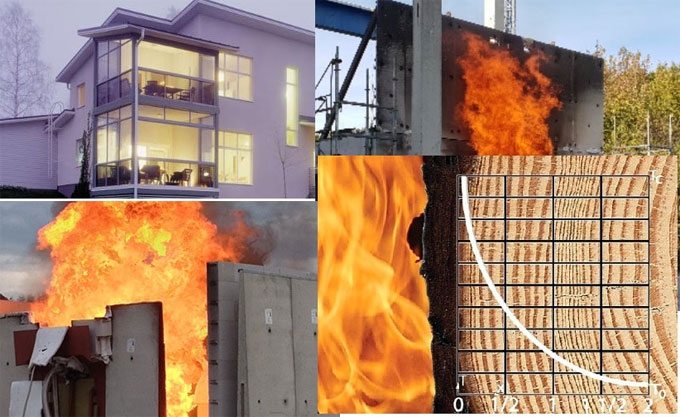
Fire Resistance in Concrete
Fire resistance of concrete is the capacity of concrete to withstand fire or to give assurance against fire. This includes the capacity of concrete auxiliary components to proceed, play out a particular basic capacity or bind fire or both.
The length of time that a component, for example, shaft, section, divider, floor, or rooftop can bear the fire, which is characterized in ASTM E 119, is named fire rating.
Fire resistance is constrained by both the physical and warm properties of the basic component. Elements overseeing the basic execution incorporate feelings of anxiety in the concrete and the steel, concrete spread, inclination of aggregate and free dampness to cause spalling, and sidelong restriction conditions.
In any case, parameters that control the warm exhibition include a kind of aggregate, free dampness in the concrete (both assimilated and narrow), and volume of concrete per square meter of uncovered region.
Instrument of Concrete Fire Resistance
Fire resistance properties of concrete are straightforward. The parts of concrete, for example, concrete and aggregate materials are artificially dormant and thus generally non-ignitable, and concrete has moderate pace of warmth.
It is this moderate pace of conductivity (heat movement) that empowers concrete to go about as a successful fire shield between neighboring spaces, yet additionally to shield itself from fire harm. In this way, certain concrete basic components like dividers in a home go about as a fire shield, shielding adjoining rooms from flares and keeping up its auxiliary trustworthiness regardless of introduction to extraordinary warmth.
How Fire Influences Concrete Structures?
At the high temperatures experienced in fires, hydrated concrete in concrete bit by bit dries out, returning to water (really steam) and concrete. This results in a decrease of solidarity and modulus of flexibility (solidness) of concrete.
In certain fires, spalling of concrete happens ? parts of concrete loosen up from the remainder of the concrete, some of the time brutally. Most fire-resistance rating prerequisites are directed by construction standards, contingent upon the kind of building and its inhabitance.
Fire appraisals are given in hours. For instance, the necessary fire-resistance appraisals for segments in skyscraper clinics are considerably more rigid than those for single-story structures utilized for capacity of noncombustible items or materials.
In the skyscraper medical clinic the segments may require a four-hour rating, though in the single story building outside dividers may require just a one-hour rating.
Variables Influencing Concrete Fire Resistance
1. Aggregate Type: Aggregate utilized in concrete can be grouped into three classes in particular: carbonate, siliceous, and lightweight. Limestone, dolomite and lime rock are called carbonate aggregates since they consist of calcium or magnesium carbonate or blends of the two.
During introduction to fire, these aggregates calcine ? carbon dioxide is driven off and calcium (or magnesium) oxide remains.
Since calcining requires heat, the response ingests a portion of the fire's warmth. The response starts at the fire-uncovered surface and gradually advances toward the contrary face. The outcome is that carbonate aggregates act to some degree better than other typical weight aggregates in a fire.
Siliceous aggregate incorporates materials comprising silica and incorporates rock and sandstone. Lightweight aggregates are generally made by warming shale, record, or mud. Concrete containing lightweight aggregates and carbonate aggregates hold the majority of their compressive quality up to about 650C.
Lightweight concrete has protecting properties, and transmits heat at a more slow rate than typical weight concrete with a similar thickness, and in this way for the most part gives expanded fire resistance.
2. Dampness Content: Dampness content impacts concrete's conduct in fire. Concrete that has not been permitted to dry may spall, especially if the concrete is exceptionally impermeable, for example, concretes made with silica smoke or latex, or on the off chance that it has an amazingly low water-concrete proportion.
3. Thickness: All in all, concrete with lower unit loads (densities) would carry on better in fire;dried lightweight concrete performs preferable in fire over typical weight concrete.
4. Thickness: The thicker or progressively enormous the concrete, the better its conduct when presented to fire.
5. Penetrability: Concretes that are progressively penetrable would for the most part perform agreeably, especially in the event that they are somewhat dry.


